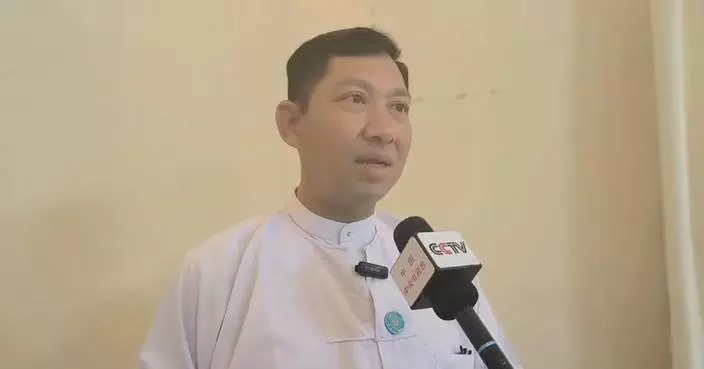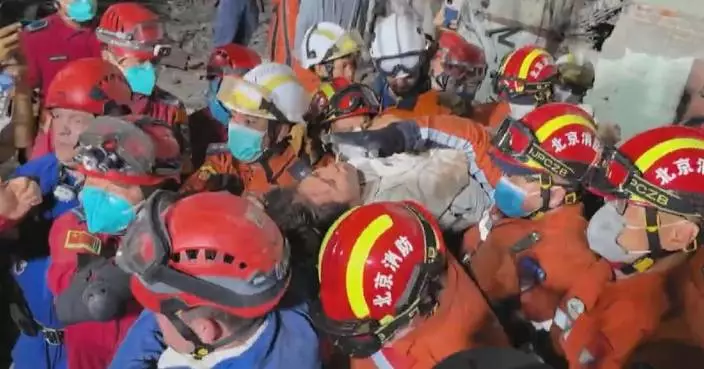The ongoing China Fashion Week held in Beijing is showcasing a slew of fashion works made with eco-friendly materials and technologies, with designers racing to present the country's intangible cultural heritages in fashion making through innovation.
At the 2025 edition of China Fashion Week, which opened on March 20 and which will run until Friday, designers showcased their works, modeled after ancient crafts such as ethnic minority Miao embroidery, batik, and lacquer painting.
As the show increasingly pursues rising trends like eco-friendliness and technology, fashion industry insiders are also actively integrating traditional Chinese designs with innovation and the notion of sustainable development.
A session of the fashion week held Tuesday showcased works of Yang Chunshan, who takes inspiration from the dragon, bird, and butterfly patterns of the Miao ethnic minority group's Bainiaoyi, a national intangible cultural heritage in China, and the images of Xing Shi, or literally the awakening lion.
The designers have also incorporated the idea of environmental protection and sustainable development into dyeing, using natural dyes from fruits like apple, pitaya, and mulberry instead of chemical dyes.
Xie Fangming, vice chairman of China Fashion Association, said the designers at the fashion week have been making innovations in areas like materials and dyeing techniques, reflecting the rising trend of promoting the development of fashion industry with state-of-the-art technology and embracing eco-friendliness.
"We've adopted a great number of technologies, including using new materials like soft, glossy, and more lightweight fabrics to develop new products. In addition, we've made lots of efforts to pursue sustainable development, like using recycled materials, recyclable materials, and plant-based dyes," he said.
The fashion week also features robot models sharing the runway with their human counterparts and also robot dogs running in lion dance costumes.

China Fashion Week highlights eco-friendly materials, technology
A rescue team from China's Hong Kong Special Administrative Region (HKSAR) arrived in Nay Pyi Taw, capital of Myanmar, on Sunday evening, and swiftly proceeded to the area hardest hit by a massive 7.7-magnitude earthquake to assist in search and rescue operations.
The 51-member team, after a brief rest at the Myanmar National Center for Disease Control (CDC) in Nay Pyi Taw, geared up for an overnight journey to Mandalay, the city closest to the quake's epicenter, to begin their crucial rescue efforts.
"I am part of the support team from the Hong Kong Hospital Authority (HA). This time, the HA has dispatched two doctors and two nurses to join the HKSAR rescue mission. We have prepared for possible emergencies, including bringing a large stock of medical supplies and equipment such as ventilators and blood pressure monitors," said Chiu Yuet Chung, one of the rescuers.
"As soon as we received news of such a severe disaster, we immediately began extensive preparations in Hong Kong. While the 'golden 72 hours ' are critical, we ensured that we could deploy as quickly as possible. This time, we were able to prepare and depart in a very short time," said Kong Ka-ho, a senior officer from Hong Kong's Fire Services Department.
Kong said the rescue team had prepared a wide range of equipment, including life-detecting radars, drones, 360-degree cameras, and demolition tools, to assist in the precise search and rescue of trapped individuals.
According to the Hong Kong SAR Government's Security Bureau, the 51-member rescue team comprises personnel from the Security Bureau, Fire Services Department, Immigration Department, and the Hospital Authority. The team also includes two fire search and rescue dogs.
The earthquake that struck Myanmar on Friday noon was the largest of the year so far and the strongest continental seismic activity globally in nearly a decade. At least 1,700 people died, 3,400 were injured, and 300 remained missing as of Sunday noon, according to the country's State Administration Council on Sunday.

China's HK rescue team rushes to Myanmar quake epicenter to search for survivors


















































